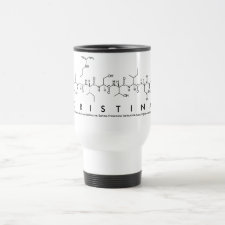
Authors: Baggiani C, Anfossi L, Baravalle P, Giovannoli C, Tozzi C
Article Title: Selectivity features of molecularly imprinted polymers recognising the carbamate group.
Publication date: 2005
Journal: Analytica Chimica Acta
Volume: 531
Issue: (2)
Page numbers: 199-207.
DOI: 10.1016/j.aca.2004.10.025
Alternative URL: http://www.sciencedirect.com/science/article/B6TF4-4DYW4X2-J/2/1daa23cff09fea66d02545c72a891515
Abstract: The molecular recognition properties of molecular imprinted polymers which bind the carbamate function were studied. Functional monomers potentially able to form non-covalent interactions with the model molecule N,O-dibenzylcarbamate were selected on the basis of a computational approach describing possible interactions between the template and a small library of vinylic monomers. These results were in accordance with N,O-dibenzylcarbamate batch-rebinding measurements performed on several miniMIPs prepared with the same library. From these preliminary results, four polymers were prepared by thermoinduced radical polymerization, using ethylene dimethacrylate as a cross-linker, chloroform (MIP1, MIP3) or acetonitrile (MIP2, MIP4) as porogens and methacrylic acid (MIP1, MIP2) or acrylamide (MIP3, MIP4) as functional monomers. Molecular recognition features of these materials were studied by high-performance liquid chromatography. In this manner selectivity was evaluated by considering the column retention of a library of sixteen structural analogues of dibenzylcarbamate, characterized by the transformation of the carbamate into a related function, or by the alteration of the molecular structure.The experimental results show that methacrylic acid is more efficient than acrylamide as a functional monomer (imprinting factors: MIP1 = 24.1, MIP2 = 25.6, MIP3 = 13.3, MIP4 = 2.44), and that chloroform enhances polymer selectivity. As regards structural motifs which conditionate the selectivity, the carbamate function strictly controls the presence/absence of molecular recognition, while shape and dimension of the substituents modulate the recognition itself. In particular, a marked recognition for analogs which were slightly bigger than the template was observed (N-benzyl-O-phenethylcarbamate: MIP1 α = 1.13, MIP2 α = 1.41, MIP3 α = 0.97; N-phenethyl-N-benzylcarbamate: MIP1 α = 1.61, MIP2 α = 1.17, MIP3 α = 0.81; N,O-diphenethylcarbamate: MIP1 α = 0.89, MIP2 α = 1.20, MIP3 α = 0.55)
Template and target information: N,O-dibenzylcarbamate
Author keywords: carbamates, liquid chromatography, miniMIPs, molecular imprinting, molecular recognition, selectivity



Join the Society for Molecular Imprinting

New items RSS feed
Sign-up for e-mail updates:
Choose between receiving an occasional newsletter or more frequent e-mail alerts.
Click here to go to the sign-up page.
Is your name elemental or peptidic? Enter your name and find out by clicking either of the buttons below!
Other products you may like:
 MIPdatabase
MIPdatabase









